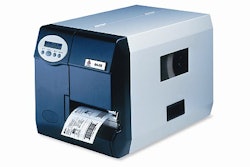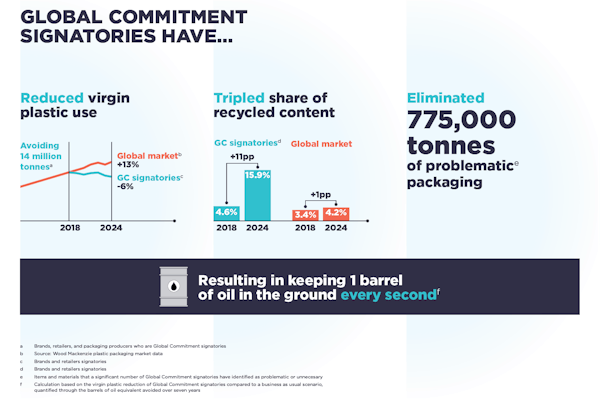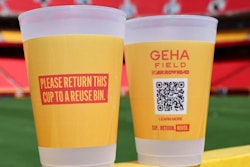Packaging for club stores and other high-volume retailers has to meet just three needs, says a major retailer’s packaging manager: “Make it jump off the shelf, solve all my logistics problems, and—by the way—it can’t cost me a fraction of a cent more.”
If those demands aren’t enough, two other factors further complicate the process of designing packaging aimed at meeting the specific needs of high-volume retailers:
• The splintering of club store and high-volume retailer packaging demands. They see packaging as a marketing tool, and each retailer wants different packaging to reinforce its market position. The result is more package variations and SKUs.
• The growth of supercenters as a dominant grocery channel is creating a new set of packaging needs.
Club stores are a fast-growing channel. Sales for 2005 were some $97.5 billion, say financial reports and industry estimates. That’s up more than 12% from 2004’s estimated $86.6 billion. Costco, Sam’s Club, and BJ’s Wholesale Club dominate the channel.
Packaging for this channel is getting more complex as retailers compete for market share. They see packaging as a weapon, and they often ask for packaging that is exclusive to them. Packagers respond with a range of solutions, from structural innovation in secondary packaging to graphic solutions on primary containers.
Structure addresses logistics
In looking at the structural side, Tom Taylor, general manager of Wilpak Inc., observes, “The club stores are each different—they want original ideas and packaging designs. If you have a pallet for BJ’s that is two-high, then Costco has to have it three-high, and Sam’s wants it four-high.”
Based in Atlanta, GA, Wilpak is a contract packager that does a lot of club store packaging. Based on the company’s experience, Taylor offers these ideas on getting the most out of packaging from the structural perspective:
“No matter how it is going to be displayed, you have to adhere to the club stores’ packaging requirements. They all have sets of freight rules—ISTA regs, pre-shipment rules, freight carrier rules. They adhere consistently to these rules.”
In theory, that could mean shipping tests for each new pallet configuration, but Taylor suggests that packagers work with a standard set of cases or trays and build variations around them, avoiding the need for extensive testing on each variation.
“You don’t want to have to validate every pallet. If you have a standard display tray, and it has gone through the testing, you don’t have to go through all that again,” he says. “You ultimately reduce your costs with larger order quantities. You help your bottom line by minimizing those costs.”
An example comes in a club store display tray from Clorox; it won a 2005 AmeriStar Award. The tray has an innovative structural design that allows it to be erected by machine. Says Randy Wood of Clorox, “It gives us a 40% reduction in the amount of corrugated compared to manually erected trays of the equivalent size. It doesn’t have quite the stacking strength of other cases, but we add heavy corner posts on pallets so we can stack them.”
According to Wood, the machine that erects trays uses off-the-shelf components put together in an unusual way to automatically set up trays. It permits changeovers between three sizes of trays, letting Clorox “mass customize” loads.
While the trays reduce costs and automate assembly, they also deliver merchandising advantages in the club store environment. “The pallet is four-side-shoppable,” Wood says, meaning that no matter how the shopper approaches the pallet in the store, the shopper sees the product in the trays and can easily remove it. “That gives us a lot of flexibility in how we configure pallets,” Wood continues. Four-side-shoppable pallets are a key in club stores where packagers can’t control how the retailer positions the pallet.
The trays come in three different sizes that allow patterns of six, seven, or eight trays per tier, depending on the size of the primary packages. Trays are modular, and different pallet configurations have been through pre-shipment testing. When a new product goes in a pre-tested pallet configuration, Clorox doesn’t have to do additional testing. “That drastically improves speed-to-market for the products,” Wood emphasizes.
Jumping off the shelf
Retailer merchandising strategies mean that successful packaging has to go beyond cost-cutting; it must actively sell brands. Tammy Cahill is the Director of Retail Activation for LPK, a Cincinnati-based design firm. She offers several guidelines for club store packaging that works as a “silent salesperson.”
First, Cahill says, be aware of “treasure hunt” merchandising tactics. Retailers who use this tactic frequently change store arrangements and special offers to keep customers coming back to see what “treasures” they can find.
Cahill says that variety packs are a part of this strategy. “You may be offering a ‘treasure’ in shampoo by bundling two or three varieties and offering a bonus. It isn’t just pure bulk—it’s a larger quantity with variety. In cereal it’s the same. The variety pack includes a cereal for mom and offers something fun for kids, too.”
Selling effectively with the package in the treasure-hunt environment means using all packaging components, not just the primary package. “You have to include trays and pallets as components of the messaging process, too,” says Cahill.
One example is a club store pack for P&G’s Olay brand where corrugated trays deliver a selling message. A display LPK created for Olay includes the brand name on the tray’s lip along with the tag line, “Love the skin you’re in.” Because club stores stress value as a key merchandising tool, the tray also includes the word “Bonus” printed directly on the lip. “Club stores are all about value,” Cahill continues. “Packaging has to reinforce that.”
The Olay tray’s configuration includes a die cut that adds shape to the visual presentation by breaking the tray’s straight, rectangular lines. It adds visual variety that highlights the multi-pack’s value.
The bold graphics on the tray underscores another design “must” for club store packaging: Package designers have to look closely at the information hierarchy on the package, and focus on a few elements that deliver top-priority messages.
“It’s what the clubs call the five-by-five rule,” Cahill explains. “What does the consumer see from five feet away in five seconds? Actually, we believe it is probably more like 12 feet, but the principle is the same—how can you help the consumer navigate the category?” Those messages need to be in a type size big enough to be read from 12 feet.
Club stores remain a “hot” channel, but other high-volume retailers also drive packaging decisions. These retailers are trying to create their own niches as a competitive tool, and packaging can help them do that.
The niche at Target stores, according to Cahill, is “all about the shopping experience.” To foster that experience, Target does not allow display pallets on its floors because cluttered floors are not part of its strategy. Target believes that clear floors focus attention on shelves where the shopping experience happens.
Target’s emphasis on the shopping experience puts a focus on primary packages. Consider a holiday promotion from Hershey Foods. Rather than simply selling candy in poly bags at Target, Hershey opted for special gift packaging—tins, ceramic jars shaped like a gift box, and metal pails holding a variety of Hershey products. This helps differentiate Target from competitors and gives packagers options. Cahill says, “This packaging creates an opportunity you don’t get in channels such as conventional grocery stores.”
A significant direction for high-volume retailers is the move to supercenters. Think SuperTarget and Wal-Mart Supercenters; they have a full-line of general merchandise but add a complete grocery store within the facility. High-volume retailers are building or converting hundreds of stores to this format each year.
Michigan-based Meijer claims to be the inventor of the supercenter concept, and increased competition from other retailers led it to revamp its private-label packaging.
One tactic was to add a top-tier line to its private label offerings. “Adding the second tier of private label is one of the directions you are seeing at retail now,” says consultant Mike Richmond of Packaging & Technology Integrated Solutions (PTIS).
“The new Meijer Gold line is an execution of that strategy. It projects a great upscale look with label graphics in categories such as salad dressings and coffee,” Richmond says. “Package graphics rely on a gold-colored band across labels and the Meijer Gold brand in script on the label. This contrasts with the traditional Meijer flag on products.”
In addition to the premium brand, Meijer retains what it calls its “first label” private label line. Carrying the Meijer brand, these products “match or exceed the quality of leading national brands,” says Meijer’s Judith Clark. New packaging is being used to convey that quality level to shoppers. In juices, for example, the retailer switched from round PET bottles to the rectangular footprint seen in packaging for national brands. Also, labels are oriented polypropylene since paper wouldn’t adequately support the value positioning of the retailer brand.
Improved logistics, too
Richmond notes that the change to rectangular footprint bottles brings economies from the logistics perspective. “Research shows that the rectangular bottles pack more densely in cases, allowing an 11% reduction in the use of corrugated,” he says. “And the bottles fit on the shelf better and create better billboard.”
Richmond also notes that packaging features such as zippers and easy-open characteristics are making their way down the private-label totem pole. “You’re seeing them in traditional supermarkets that are tying to differentiate themselves from competitors. This kind of packaging isn’t limited to national brands any more.”
From the broadest perspective, what packagers are seeing is a “niching” at retail—from club stores to high-volume retailers down to traditional grocery stores. Retailers are using packaging as one of the tools to differentiate themselves from other retailers. What that translates into is fragmentation of packaging. Simply, one size no longer fits all. The packagers who will be most successful are those who understand the niches and find ways to economically create packages to fill them.
Jim Peters, CPP, is director of education for the Institution of Packaging Professionals and a consultant on packaging for retailers.
See sidebar to this article: Data says RFID helps Wal-Mart cut out-of-stocks by 16%



























